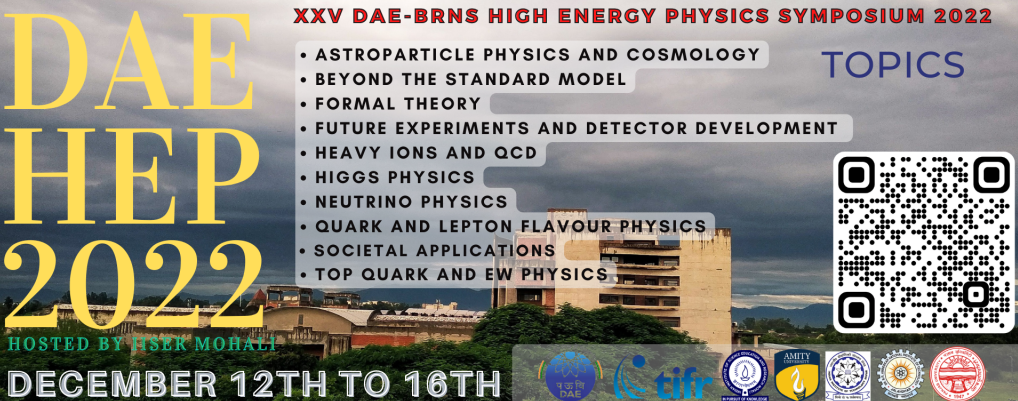Speaker
Description
The event-by-event fluctuations of conserved quantities, such as, baryon number, strangeness and electric charge in ultrarelativistic heavy-ion collisions are related to thermodynamic properties of the produced hot and dense system and may reveal the properties of the quark--gluon plasma and the QCD phase diagram. In the present work, the net-charge fluctuations are studied in terms of the observable $\nu_{dyn}[+,-]$, which is a measure of the relative correlation strength of particle pairs. The observable $\nu_{dyn}[+,-]$ is robust against detector efficiency losses and after proper scaling it becomes equivalent to the strongly-intensive quantity, $\Sigma$. The values of $\nu_{dyn}[+,-]$ are calculated for experimental data on pp collisions at $\sqrt{s}$ = 5.02 TeV, p--Pb collisions at $\sqrt{s}_{\rm NN}$ = 5.02 TeV, Pb--Pb collisions at $\sqrt{s}_{\rm NN}$ = 2.76 and 5.02 TeV and Xe--Xe collisions at $\sqrt{s}_{\rm NN}$ = 5.44 TeV using the ALICE detector. The observed dependence of $\nu_{dyn}[+,-]$ on charged particle density shows a regular smooth evolution of net-charge fluctuations from small to large collision systems. Moreover, the observed negative values of $\nu_{dyn}[+,-]$ indicate the dominance of correlation between the oppositely charged particle pairs compared to that arising from the like-sign charge pairs. These findings are compared to predictions from Monte Carlo models such as PYTHIA 8, HIJING and EPOS-LHC. The effect of the kinematic acceptance has also been investigated by examining the dependence of scaled $\nu_{dyn}[+,-]$ values on transverse momentum range as well as the width of the pseudorapidity window. The effect of the hadronic resonance decays is also studied by comparing the experimental findings with the predictions of HIJING model.
| Session | Heavy Ions and QCD |
|---|

